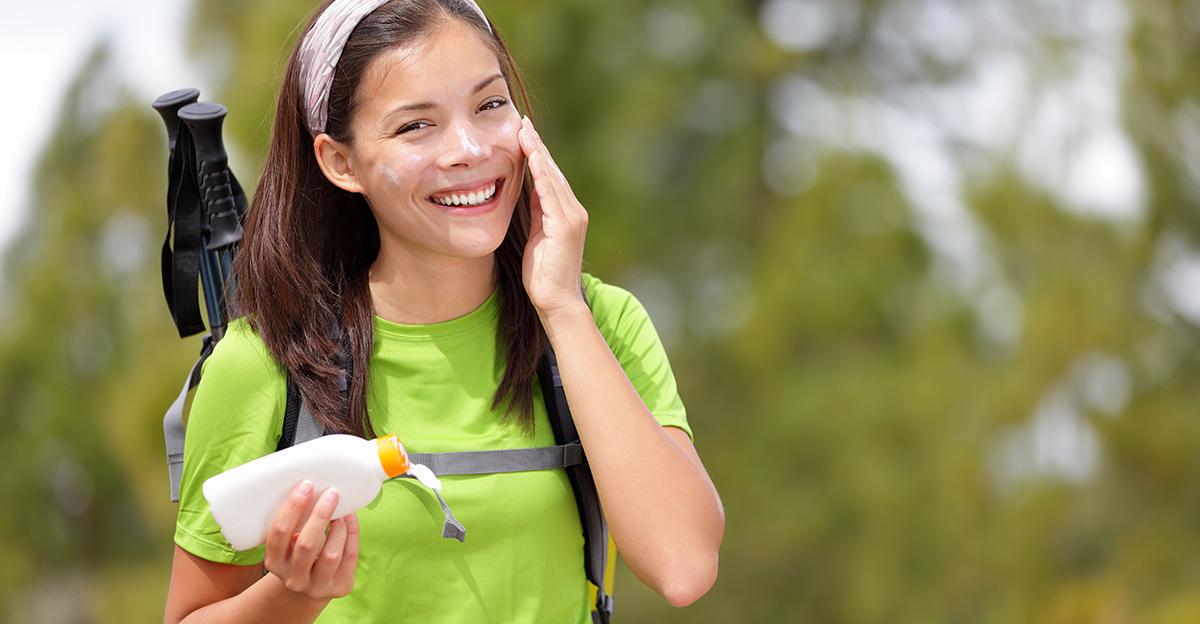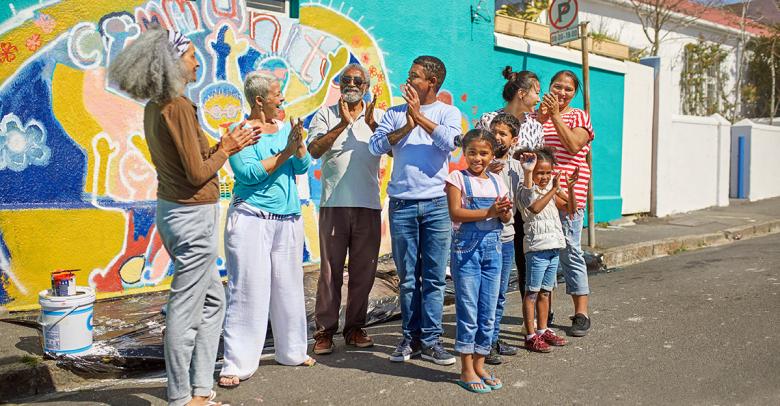Did you know that skin cancer is the most common form of cancer? There are more cases of skin cancer each year than all other forms of cancer combined! Most skin cancers are caused by the sun or other types of ultraviolet UV rays, like tanning beds. So how can you and your summer program participants stay active and healthy outside without getting too much exposure to UV rays? Read on to get some tips for sun safety.
Important Sun Safety Terminology
First, let’s take a look at some sun safety terms:
UVA and UVB Rays
Light rays that reach us from the sun are made up of long-wave ultraviolet A (UVA) and short-wave ultraviolet B (UVB). UVA rays can reach us any day, even when it’s cloudy or through glass. UVAs are most common, making up about 95% of the rays that reach the earth. These rays pass through our skin deep into the dermis, which is the skin’s thickest layer. You may not feel a sunburn from the UVA rays, but exposure to them can cause wrinkling, premature aging of the skin, and skin cancer.
UVB rays are shorter and will typically burn the topmost layers of your skin. They also play a large role in the incidence of skin cancer. Intensities of UVB rays vary according to time of year, geographic location, and time of day. The peak UVB hours are from 10am to 4pm.
Sun Protection Factor (SPF) and Broad-Spectrum Sunscreen
Sunscreen protects you from both types of rays. This is known as broad-spectrum sunscreen. The strength of sunscreen is known as Sun Protection Factor (SPF). This factor measures how long UVB rays will take to start reddening skin. So if your sunscreen has an SPF of 25, and assuming you apply it as recommended, it will take 25 times longer to start to burn than without sunscreen.
Most dermatologists recommend sunscreen of at least 15 to 30 SPF. Federal regulations require sunscreens to offer the proper proportion of both UVA and UVB protection.
UV Index
The UV Index measures the amount of UV in the sunlight reaching the planet’s surface at a certain location, time of year, and under current conditions. It is expressed in terms of the risks of exposure to that amount of radiation. You can typically get this from the EPA website or most weather apps.
How to Protect From Sun Exposure
Now that you know the terminology, what can you do to prevent damage to yourself and the kids in your summer program? Here are the most effective methods of keeping UV exposure to a minimum during the long summer days.
Choose Your Outside Time Wisely
As previously mentioned, peak UVB hours are from 10am to 4pm. If you can keep outside activities to a minimum during these hours, you will be a sun-blocking hero. However, due to the hours of most summer activities, you know that may not be possible.
Dress for Less (Sun, that is)
If you’re trying to protect yourself from the sun, the general clothing theory is “more is better.” You’ll want long sleeves, long pants, and a wide-brimmed hat (3 inches around) that adequately covers your face, ears, and scalp.
Ideally, clothing should have a tighter weave fabric with good UPF (Ultraviolet Protection Factor, like SPF for clothing). A typical cotton t-shirt has a UPF of only around 6. For sun protection, it is recommended clothing have a UPF over 15 (15-24 is good, 25-39 is very good, and 40+ is excellent).
Many companies sell activewear clothing with high UPF that’s comfortable and compatible with being physically active. Teach your kids about UPF and allow them to bring and wear over-shirts and hats when you take them out to play.
Take Cover
Offer a break from the sun by setting up a variety of shade canopies and umbrellas in areas where kids eat, rest, and play. Providing shade structures can reduce direct sun exposure and help prevent heat exhaustion from too much sun. You can even make it fun by building an outdoor fort or setting up a tent.
Slather Up
Provide good, quality broad-spectrum sunscreen of at least SPF 15-30. Squeeze a blob into their hands and have participants apply it to their faces and any other exposed areas before heading outside. Or, try sunscreen towelettes for an easy on-the-go option.
If, for some reason, kids will be outdoors for more than 2 hours, bring more sunscreen with you so they can re-apply. Be certain each kid has enough to apply proper coverage. It should be about 2mg per square centimeter of exposed skin or 1 ounce for full body coverage.
Your Future’s So Bright, You Gotta Wear Shades!
Don’t forget to protect your eyes! UV rays can cause all sorts of damage, including cataracts and macular degeneration. Wear sunglasses that block all types of UV rays. Wraparound frames that fit close to your head and will allow far less light than most shades. You’ll look like an athlete even if you’re just walking the fields! If your kids have them, allow them to wear sunglasses, too. They aren’t just for looking cool but for the health of their eyes.
Make it a Habit
Like physical activity, where a little bit here and there adds up, your exposure to the sun does the same. You need protection every day, not just days where you will be outside for hours. Ten minutes here and a half-hour there all accumulate to do damage to your skin. Make it a habit to wear sunscreen on exposed skin every day.
When taking kids out for activities, make it a habit to take a minute or two for everyone to get ready. Shirts, hats, sunscreen, sunglasses. Do this a few times in a row to make it into a routine.
Don’t Forget to Add Water!
In addition to taking care of your skin and eyes, you’ll also want to protect against dehydration and other heat-related maladies. Have plenty of water available for your kids to drink when they are engaged in moderate-to-vigorous physical activity, whether outside or in.
Use a large water cooler and encourage kids to bring reusable water bottles from home that can easily be refilled during the day. Provide water breaks every 20-30 minutes, depending on the weather, so they can rehydrate.
With summer fast approaching, be prepared for the sun in all its glory. Don’t let it stop you from getting your participants outside and active. How do you plan on being sun-wise this summer and saving your skin from undue stress and damage?






Leave a Reply